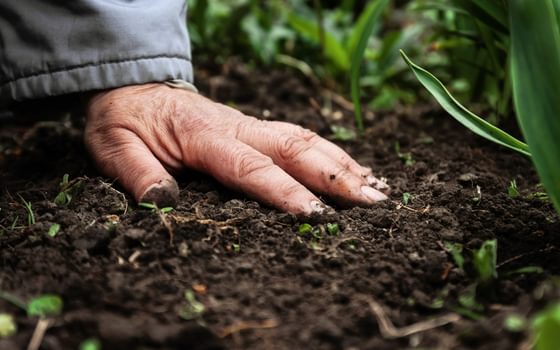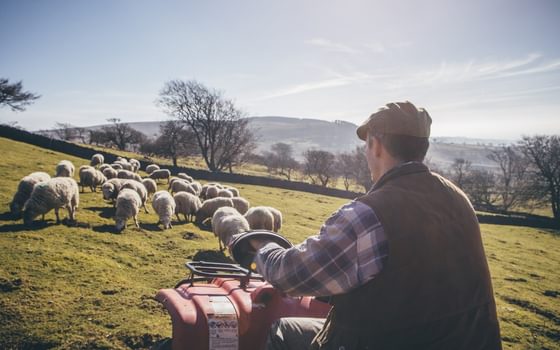Ending the war over Scottish scampi
25 August 2015
Nephrops norvegicus – more commonly known as a Dublin bay prawn, the Norway lobster, or even more commonly as scampi – is big business for British fishers. In 2013 UK nephrops landings totalled 28,000 tonnes – 4.5% of overall UK landings – with a value of around £87 million, 12% of the total value.
The main fishing grounds are the North Sea and to the West of Scotland, and the relatively high value per tonne means that nephrops is a key species for Scottish fishers. It consistently enters the top three species in terms of volume and value.
This is part of the reason a controversy, dubbed Prawn Wars, is currently erupting in Scotland. Different types of fishers, most notably ‘trawlers’ (towing gear across the seabed) and ‘creelers’ (dropping baited pots onto the seabed and leaving them for a period of time), are targeting some of the same areas.
What’s the problem?
This tension largely began in 1984 when a three mile limit excluding trawlers from the inshore grounds was repealed under the Inshore Fishing (Scotland) Act. Recently there have been calls to re-instate the limit in areas of Scotland’s inshore.
The area limit is particularly important because it is the fishing grounds rather than the nephrops themselves causing the conflict. Creel fishers market their catch live as ‘langoustine’, a high value export product sold mainly to France. A creel is similar to a lobster or crab pot and is highly selective, meaning undersized nephrops or non-target species can be returned to the water alive.
A trawl by comparison moves along the floor and effectively rakes up much of what lives on or near the seabed. The impacts on habitats are worse than the static creel pots which are left in strings along the seabed. Towing heavy gear behind a boat also uses more fossil fuels and has much higher level of bycatch – species caught by accident – which for the most part cannot be returned alive to the sea.
What can be done?
Underneath all the drama and reports of sabotage there is a key point about managing fisheries that is not often publicly discussed – the notion of value. If a government is to manage access to a resource between competing groups, how can they attempt to deliver the most socio-economic value while minimising environmental impact?
This sort of measurement is not easy, but here’s how we explained the issue in our 2011 report Value Slipping Through the Net:
“Fish stocks are a resource that can be exploited by many different types of fishing. Each type of fishing has different impacts, ranging from how many people have jobs and whether benefits support resilient coastal communities to how severe environmental damage is, how many fish are discarded, and the level of greenhouse gas (GHG) emissions. We use this logic to propose the implementation of access criteria, or conditions on fishing, so that fishing delivers the best of these, while being conducive to rebuilding the perilous state of fish resources.”
We compared two other fishing gears in conflict: gillnets and trawlers fishing cod in the North Sea. We found gillnetters contributed more value than trawlers, but received less quota and subsidies for fishing cod.
It’s clear that the Prawn Wars, with both fleets operating in conflict, is not sustainable and could benefit from having the same framework applied.
What happens next?
The Scottish debate on nephrops has broadened into wider ecological concerns on the use of mobile gear (trawls) inshore. Of particular concern is whether it should be permitted in Scotland’s 30 Marine Protected Areas (MPAs). Of the 3% of Scottish waters currently classed as MPAs most are open to trawling.
Conservationists are calling for stronger management of MPAs. The Scottish Creel Fishermens Federation (SCFF), as well as community organisations are questioning now whether the three mile limit could be re-instated in some areas to protect marine ecosystems and the future of the nephrops, amongst other species.
In contrast the Scottish Fishermen’s Federation (SFF) say any restrictions on fishing in MPAs will impact coastal communities and should therefore be reconsidered. Fishers have also invested money on the assumption of continued access: if the limit is re-instated and MPA management measures ban towed gear, then some parts of the industry may demand compensation.
This adds up to big fears about a loss of jobs in rural areas. But roughly 70% of all active nephrops fishers in Scotland are creelers as opposed to trawlers. Low entry costs enable rural people to enter the industry and it provides a viable livelihood for coastal communities, so long as the stocks are harvested sustainably.
Either way, the management of inshore fisheries and MPAs is a sticky issue for the Scottish Government and any change would likely require further consultation and fair lead-in time.
‘Value slipping through the net’ was about quota allocation, but our framework can also be used to look at spatial fisheries management to understand which gear generates higher social value for lower environmental costs. Management decisions need to be informed by a more holistic understanding of value and who creates it.
Topics Fisheries & farming






